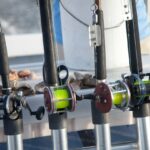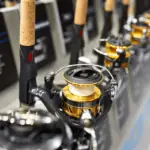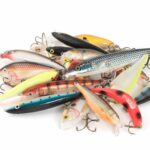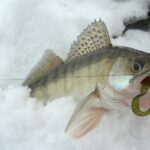As a pursuit, fishing is pretty straightforward. There is little mystery about how rods, reels, lures, flies, and bait work. One area that is a bit murky, however, is the bobber stop.
If you are like most anglers, if you know what a bobber-stop is, you probably are unaware there are multiple types of bobber-stops that all play different functions. More to the point, you probably are unaware of how they can improve your fishing.
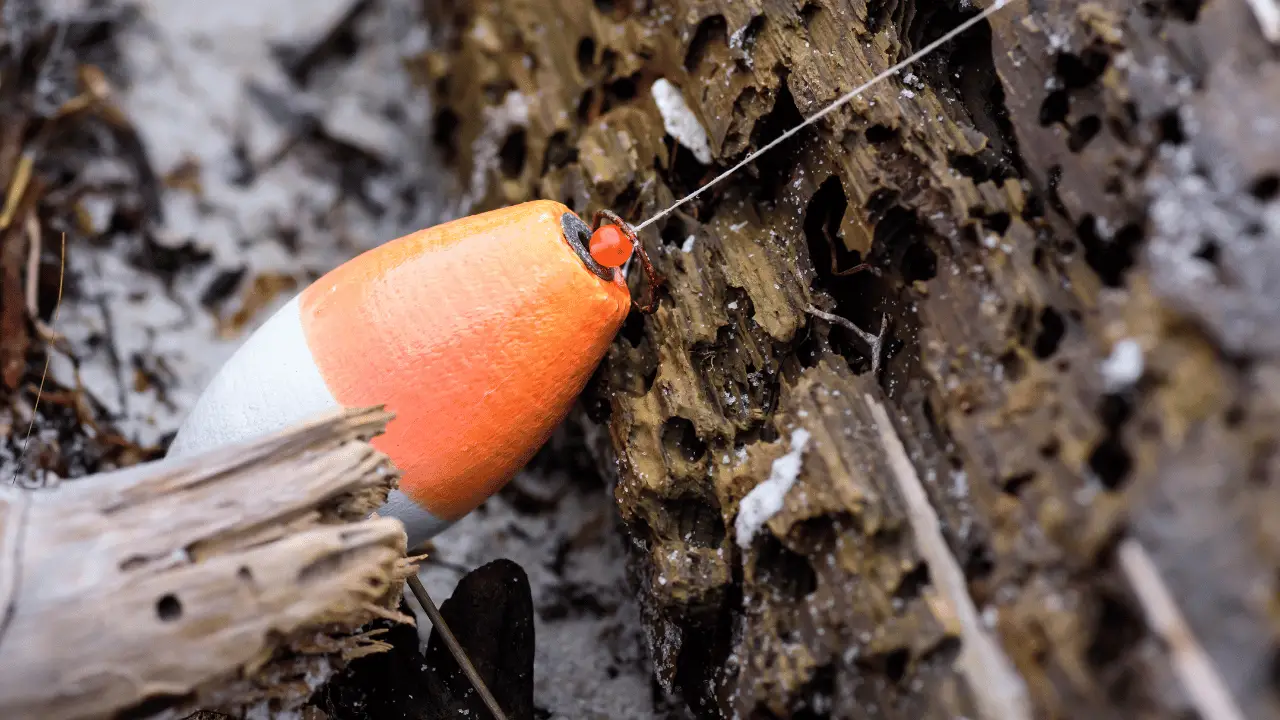
Here is all you need to know about bobber stops, the most popular types, and how to use them.
What Are Bobber Stops?
Bobber stops serve one function: Holding your bobber in place or restricting it from moving up and down your line. That is important because if your bobber moves on your line, you risk:
- Having too long of a leader and your bait dragging on the bottom
- Having too little of a leader and having the bait sit only a few inches from the surface
- Missing schools of fish because the bobber messed up your leader calibration
- Missing a bite if the bobber is loose enough
For most, fishing with a bobber meant attaching one of those red and white floating balls to your line about 18 inches above your hook and bait, heaving it out, and hoping for the best. Inevitably, the bobber would slide up and down the line, usually dependent on the pound-test line you used. The larger pound test line slipped less than the low-pound test line.
The reality of the bobber slipping meant, at a minimum, your depth of bait changed. That could lead to any of the consequences above. A leader that was too long or too short due to slipping often meant your bait got ignored by fish.
How to Use Bobber Stops
A stopper for your bobbers serves multiple functions, all related:
- It holds your line at the depth you want to fish
- It lets you adjust your depth quickly and easily
- It lets you place your bait at exactly the right depth to attract the most fish
Using the right stop, you can adjust your line based on the depth you want to fish. The right depth lets you avoid underwater structure, weeds, and debris. It also lets you target fish in the water column versus making the fish come up to your bait’s level. Finally, an effective stop can help you hold your bait at the right level to present bait right before a school of fish.
Targeting based on depth works particularly well with schooling fish like crappie or suspending fish like sunfish. That does not mean an effective stop is useless with other fish species. Many people use stops on their bobbers when fishing for catfish, bass, and walleye.
Being able to target fish and the depth they are hovering leads to more fishing time for you, better quality exposure to fish by your bait, and not having to worry about weeds or structures.
How to Use Rubber Bobber Stops?
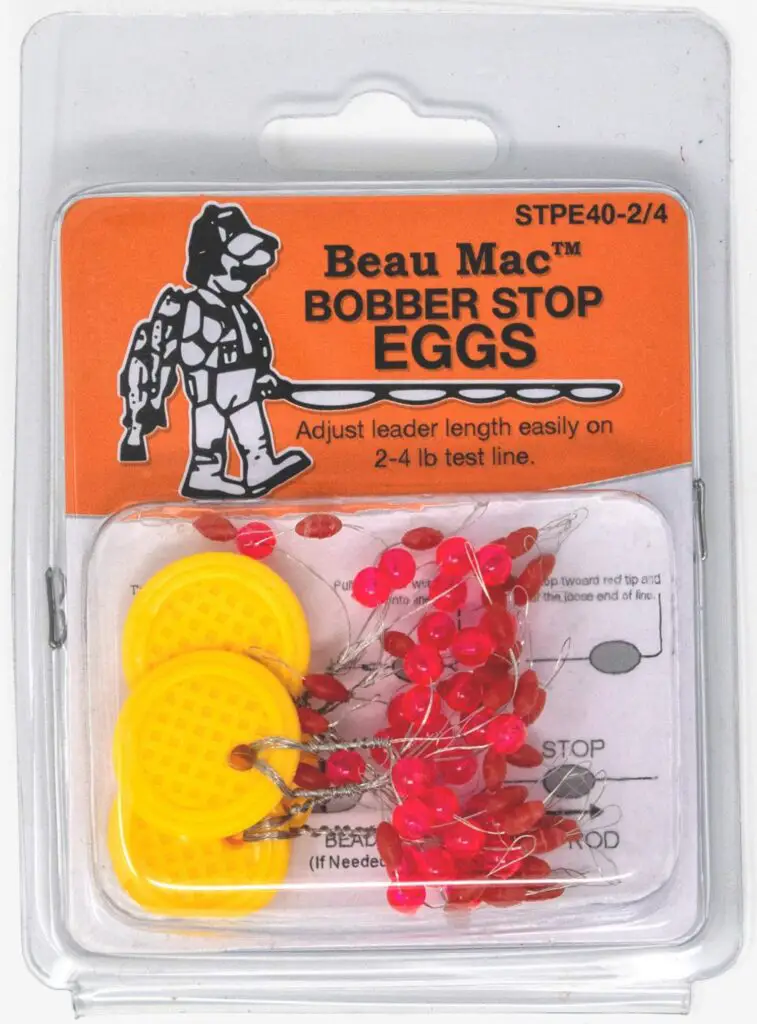
Rubber bobber stops are possibly the most popular because they are so simple and easy to use. The thickness of your line determines which of the three sizes of stops suits your rig the best.
For example, you would use a small stop for a line that is 4-pound test or less. For a line larger than a 10-pound test, you would opt for the larger stop. For a line that ranges from 5 to 9 pounds of test (6, 8, and 10 being the most popular,) a medium-sized stop serves you best.
The way a rubber bobber stop works are that your line runs through the center to the desired depth, at which point you slide a stop bead onto the line. To adjust the stop, you pinch the bead and move it up or down your line.
How to Use a Dogbone Bobber Stop?
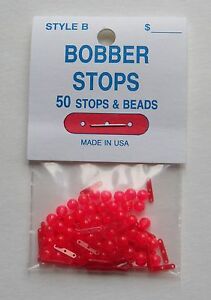
A dog bone bobber stop is another effective stop, although if your hands lack dexterity, it can be tricky to use one. Run your line through one hole on the stop and then around the bog bone-shaped stop a few times. Once you have wrapped the line around the center of the dog bone, run your line through the other hole.
One tip to using the dog bone stop is to run your line through the second hole in the opposite direction as you ran the line through the first hole. Running in the opposite direction gives the line a little more cinching power, so the stopper stays in place. Adjusting a dog bone bobber stop is the most complex of the four stoppers covered here.
Loosen your line strung through the second hold by pushing it back through the hole. Once you have a loop, the twisted line on the dob bone piece will loosen a little bit. You can then maneuver your line up and down based on your desired depth. A drawback to this type of adjustment of your line is that it can cause the line to wear if you adjust it a lot.
How to Use 4-Hole Bobber Stops?
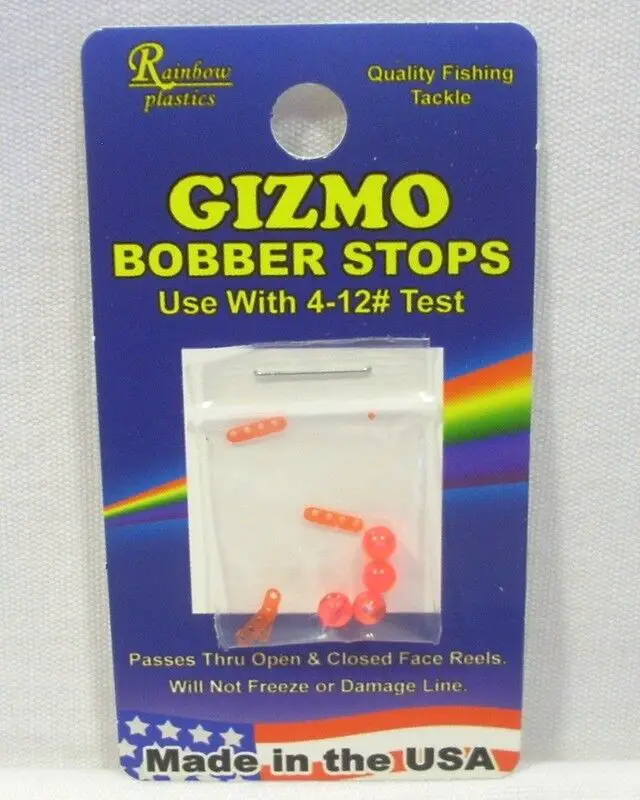
The 4-hole bobber stop is simple to rig and adjust, but it is not used as much as the other types of bobber stops. 4-hole stops are a piece of plastic that is oblong and has four tiny holes. Each plastic piece is about a half inch. The stop typically also comes with a stop bead.
Attaching a 4-hole stop is more complicated, which is why it is not as popular as other bobber stops. While the actual stop is softer plastic and flexible, running your line through the holes requires a bit of dexterity. If you struggle with running line through multiple eyelets because of arthritis, etc., this might not be the bobber stop for you.
Each hole can accommodate up to a 12-pound test line diameter. 4-hole stops work best with line that is a lower pound test because the diameter goes through the holes easier.
Another risk, although slim, in running larger pound test line through the stop is that if you have hooked a large fish, the line can fray on the edges of the stop.
To attach a 4-hole bobber stop to the line, run your line through the top hole on the stop. You then weave your line through the other three holes. Once you have strung your line through all four holes, slide the stop bead onto your fishing line.
The stop bead prevents incremental slippage that comes with using the 4-hole stopper over dozens of casts.
How to Use a Slip-Knot Bobber Stop?
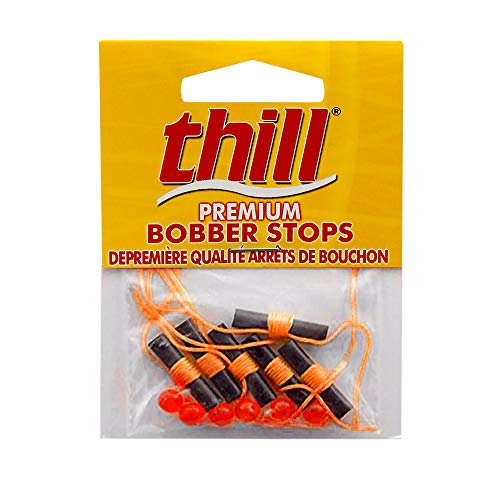
A slip-knot bobber stop is a complicated piece of equipment experienced anglers can master, but newbies should probably start with something simpler. The slip-knot bobber is just string that you attach to your line at the bobber stopping point. As the string absorbs moisture, it can become tighter, which makes adjusting it up and down more difficult.
To attach a slip-knot stop, work your line through the plastic tube to the position you want the bobber to stop. Slide the string off the plastic tube onto your line and pull on both ends as you would tighten a knot. The knot secures the stop in place. To adjust the depth of the stop, pull the knot up and down your line.
In most cases, the knot will slide up and down easily. Over a long time fishing, however, the stop can become too tight to move the line without affecting its composition. Another risk is that the stop rots on the line if you leave it on for several fishing trips over the fishing season.
- Do You Need An Indicator For Nymph Fishing? - November 16, 2023
- Fishing Safety Tips For Families - September 25, 2023
- What Is The Best Time To Night Fish At A Lake? - September 18, 2023

![Fly Fishing for Beginners [Ultimate Guide to Catching Fish] fly fishing for beginners](https://irvinelake.net/wp-content/uploads/2022/11/fly-fishing-man-150x150.png)
![Types of Fishing Rods [A Guide For Beginners] types of fishing rods](https://irvinelake.net/wp-content/uploads/2022/10/types-of-fishing-rods-1-150x150.png)
